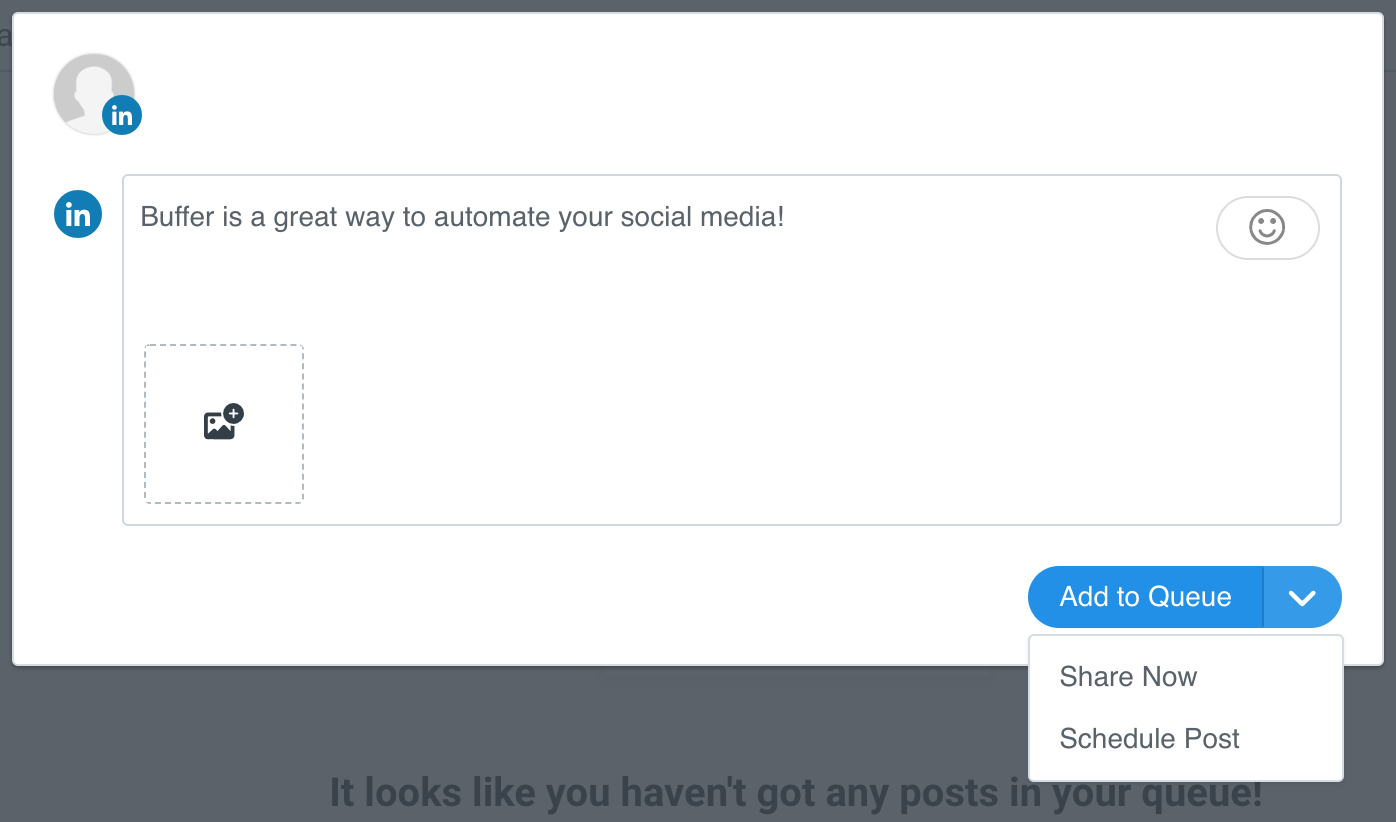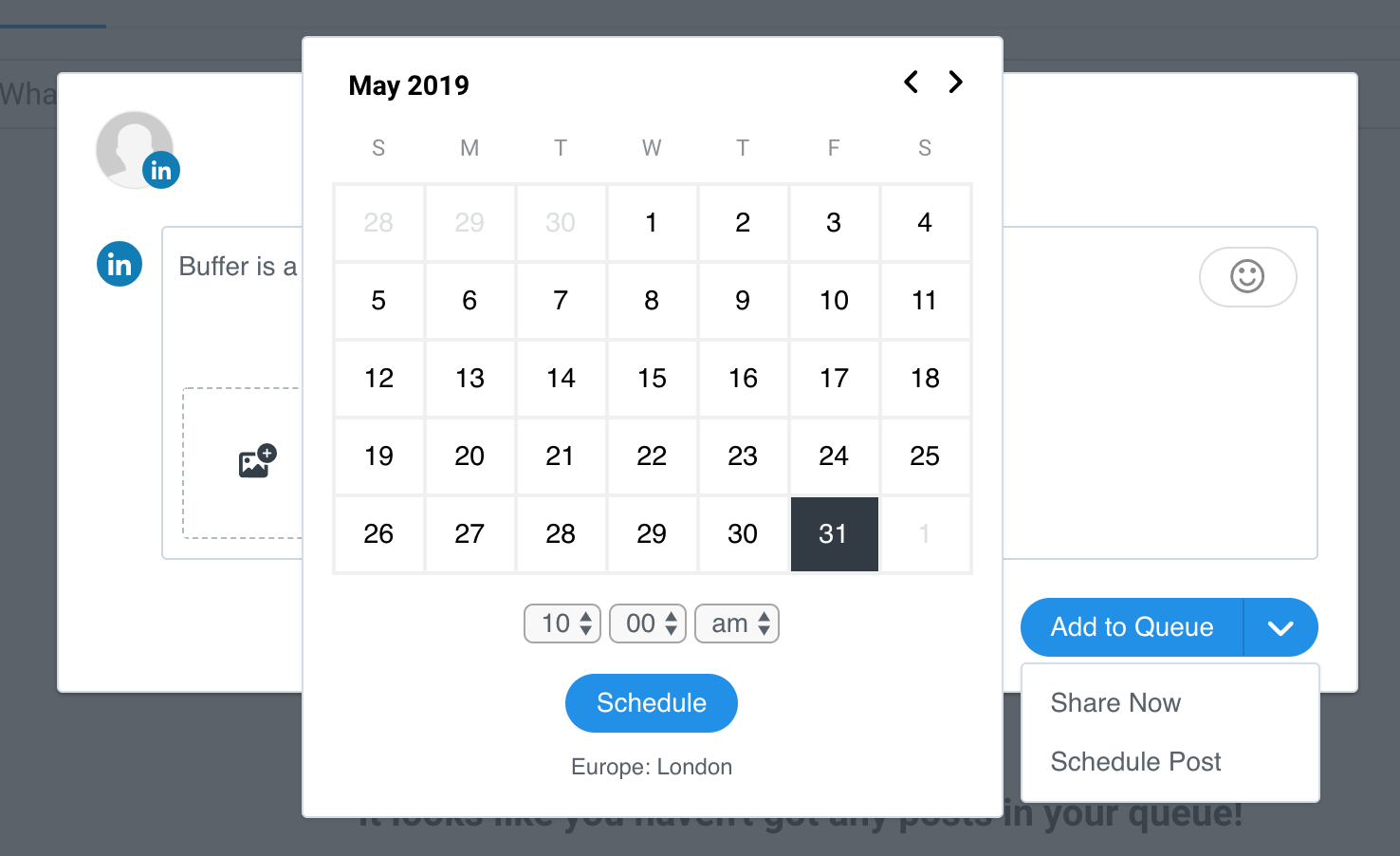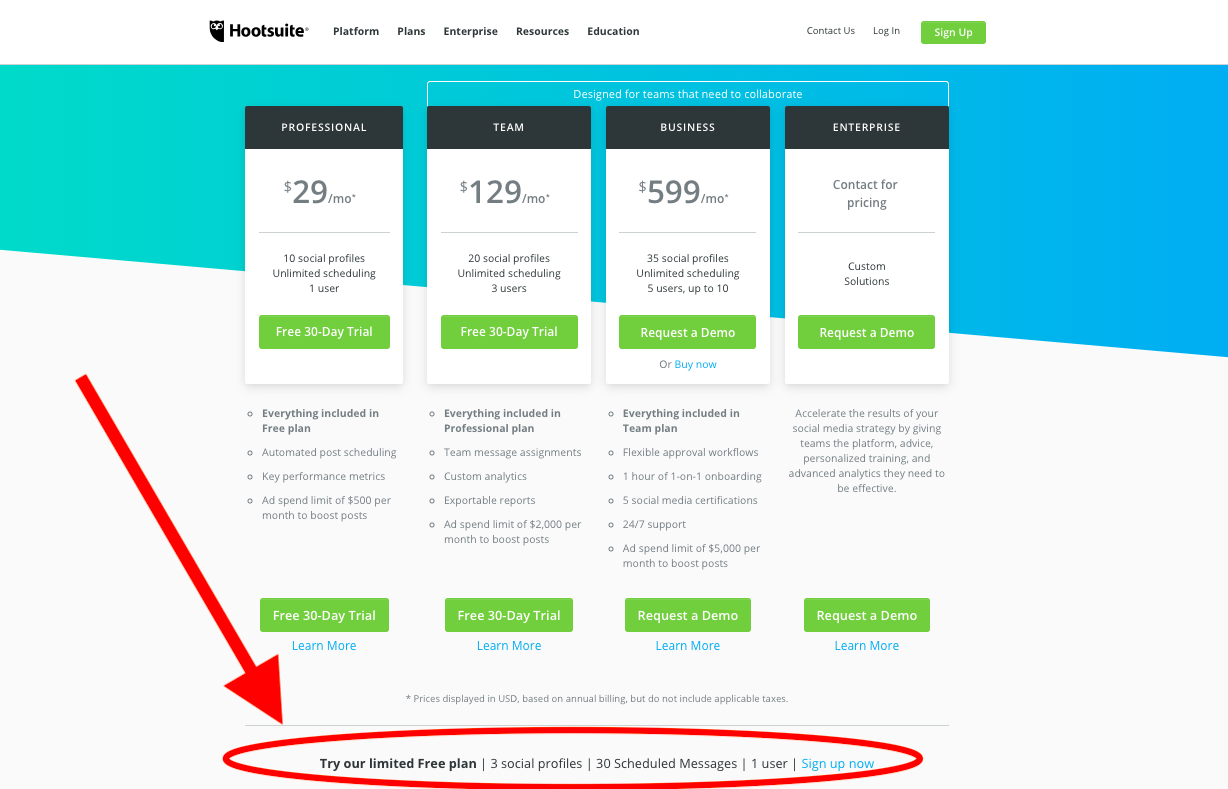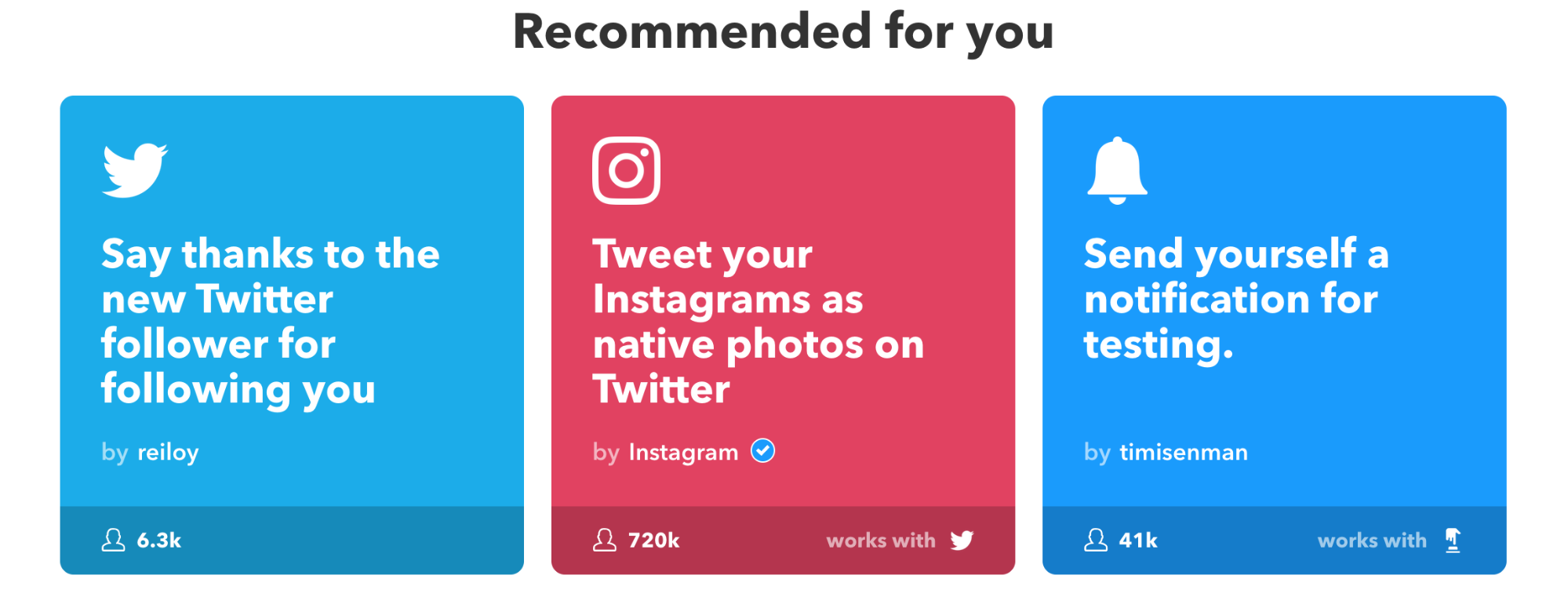← Go Back to the Impact Challenge Table of Contents
If you’ve been working through the OU Impact Challenge, you now have a slew of academic social media accounts, including your blog. How can you possibly find time to manage all these accounts, given all the demands already on your time?
Today, we’re going to talk about how you can use social media automation tools like Buffer and IFTTT to manage your accounts in a more efficient way.
Below, we’ll introduce you to how social media automation works, the best automation tools, and rules to follow for success.
What is social media automation?
When you want to share a new blog post or article link on your academic social media accounts, you can save time by using a single tool to post to Twitter, Facebook, and LinkedIn all at once. These tools will allow you to compose one message and post it to all your connected academic social media accounts with the click of a button or whenever a “trigger” is tripped. That’s social media automation, and it’s going to save you a ton of time.
Most social media automation tools can also be used to schedule posts in advance, so you can plan ahead to share your content over the course of a day or a week, rather than all at once.
Cyborgs vs. robots: your best options for automation

There are two types of social media automation tools:
Cyborgs
First up are the “composing and sharing platforms,” which we’ll call “cyborgs,” because they require some human input to automate future actions. Buffer is our recommended platform for this, and we’ll cover it below.
In general, here’s how cyborg tools work: you log on to the platform, compose a message to share, select the academic social media accounts you want to share the message on, and then schedule the message to post at a later time. Cyborgs are more hands-on, but they allow for superior control of messaging and timing.
Robots
Your other option is full-blown automators, which we’ll call “robots” due to the fact that they automate posting based on whether or not certain actions have occurred on the platforms they’re connected instead of basing their actions on human input. IFTTT is in this category (again, more on IFTTT below).
When using a robot tool, you first define and set up actions you want to automate – for example, “If I write and post a new blog post, then I’ll share a link and the title of the post automatically on Twitter and Facebook.” Then, whenever you complete that action, the robot will do its work, immediately automating posts across various social media sites. In general, robots’ big drawback is that you don’t have much control over what’s automatically posted and when, but they do save you time and effort by not requiring human intervention in order to work.
All of the tools we’ll cover below tend to post to Facebook, Twitter, and LinkedIn out-of-the-box. All also have a flaw: they don’t let you automate posts to or from ResearchGate, Academia.edu, or Google Scholar. Below, we’ll introduce some workarounds that address this problem. But first, let’s check out the most popular automation tools one by one.
Buffer
Buffer is a popular, browser-based, “cyborg” social media automation platform. On the free tier of the service, you can connect to up to three accounts. Available services are: Instagram, Twitter, a Facebook account or a group, and a Linkedin page or profile. In the paid version you also gain the ability to automate a Pinterest account, as well as increasing the total number of accounts you can automate depending on which payment level you choose.
To get started, sign up for an account and connect the academic social media accounts to which you want to post. On the Content tab, you’ll see a blank update box. This is where you’ll compose your message.
First, select the networks to which you want to post; then, compose your message (a “remaining characters” limit appears to the left of the “Add to queue” button), add a link, and add a photo (click the camera icon on the bottom left of the update box, and Buffer will guide you through selecting and adding a photo to the post). 
When you’ve finished composing your message, you can either add the post to your queue to be shared at a time that Buffer selects, share the post immediately, or schedule the post to appear at a time that you specify. 
You can also customize the times at which Buffer will share items in your queue. Click on the Schedule tab, select the days of the week you want Buffer to share content, and then add the times of day (and night) you want Buffer to share content.
Hootsuite
Hootsuite is another popular “cyborg” social media automation platform. You can both schedule posts on the service and monitor interactions across your profiles via its Stream interface, pictured above.
To get started, sign up for a Hootsuite account and connect up to three of your academic social media profiles for free (perfect if you’re just connecting your Twitter, LinkedIn, and Facebook accounts). It takes some searching to find their free plan – head to their plans page and underneath all of the paid plans, in very small type, they’ve hidden their free plan: 
Once you’ve signed up for a Hootsuite account, you’ll want to follow their instructions to add your Twitter, Facebook, and LinkedIn accounts. You’ll then want to start composing messages that will get sent to all three accounts simultaneously.
To compose a message, hover over the “Send to” box at the top left of your screen to choose which accounts you’ll post to. The box will automatically expand to show you the full composition and posting options. You can attach links, images, GIFs, videos, etc., and you can choose whether or not to share your location.
When you’ve finished composing your message, you can choose to “Send now” or click the calendar icon to schedule your post for the future. If you choose to schedule ahead, note that you can either manually specify a time and date for your post, or allow the post to be added to the AutoSchedule. AutoSchedule will post your message based on an algorithm that determines when your post will receive optimal impact.
Okay, we’ve covered your options for automating part of your academic social media routine with cyborgs. Let’s talk about what robots can do for you.
IFTTT

IFTTT (“If this, then that”) is a powerful “robot” automation platform. Here’s how it works: you select an applet that has an appropriate trigger and action. For example you can have IFTTT post a tweet of each of your facebook status updates.
There are thousands of interesting applets, but we are focusing on the ones that will do things like, post to Twitter, Facebook, and LinkedIn anytime you’ve written a new blog post; cross-post from one social network to another, so your LinkedIn posts automatically appear on Twitter and Facebook and vice versa; tweet when you’ve created a GitHub repository; and so on.
Most of your social media automation needs can be served by existing applets, and you can use the search function (at the top of the page) to find them. However, if you have a particular need that does not have its own applet yet, you can go about making your own. IFTTT has a video about making applets, and a help page to get you started. The system is quite intuitive, and you do not need to be a coding genius to put together some top notch automation.
Built-in automation tools
Though ResearchGate and Academia.edu aren’t connectable to IFTTT or Buffer, you can use their built-in automation tools to post updates whenever you add a paper to either platform. On ResearchGate, add a new publication and then head to the publication’s page. Beneath the basic article information at the top of your profile, you’ll see a button to “Share” your article on LinkedIn, Facebook, Twitter and other social networks. Click on the service where you want to share your article, and you’ll be prompted to connect your profile and share the post.
On Academia.edu, add your Twitter handle on your profile homepage. Whenever you add a new paper, you’ll be prompted to tweet about your upload.
Ingredients for successful social media automation
There are some best practices you need to be aware of when automating your academic social media streams to optimize your efficiency and avoid accidentally coming across as a spammer:
Pay attention to formatting and medium when posting across multiple platforms
Twitter, Facebook, and LinkedIn all have different limits on content length that can be shared in a single message. If you have a message that is better communicated in a long post, try posting separate messages to Twitter and then to Facebook and LinkedIn.
(Carefully) Schedule ahead
Consider automating your sharing for maximum reach and engagement. For example, some content gets more clicks, comments, and shares if posted on the weekend or late at night. You could schedule your posts to appear during those times, and also test other times to see if they’re better for your audience (more on that below).
Automation can be great for sharing links to posters, slides, and comments while you’re presenting at conferences. Postdoc Ross Mounce used automation to announce that he was presenting while he was on stage. Research scientist Keith Bradnam used automation to tweet a pre-recorded video related to a presentation he was giving, while he was giving it. You can also share blog posts that you’ve written in advance when you’re on holiday, at busy times in the semester, and other times when you don’t have time to post to your academic social media.
If you do schedule ahead, be prepared to hit “pause” if major events happen. Otherwise, you can come across as insensitive. One example to learn from is Guy Kawasaki, who was criticized for keeping his social media automation running while the Boston Marathon bombing unfolded in 2013. Imagine if your automation made it appear as though you were trying to promote your work during a similar catastrophe!
Don’t automate interactions
Some like to automatically tweet “Hello!” to new followers, or reply with a standard message to those who tweet at them. Both of these tactics detract from the reason you’re on social media – to be social and forge important connections! Automated interactions can be a missed opportunity to learn about new followers or engage in discussions. Rather than automating interactions, save time by setting aside a half hour or so on a weekly basis to batch your replies.
Find the best times and content types to post for your audience
You’ll want to post when your followers are most likely to read and interact with your posts and articles in the form of shares, retweets, clicks, comments, and so on. In general, there are ideal times and days to post to various social networks, but you should learn what’s best for your specific audience.
The Buffer blog suggests that you consider the following when determining your academic social media automation schedule:
- In what time zones are the majority of your Twitter followers located? We recommend Tweriod to learn when your followers are online.
- When do your posts most often get clicked and shared? Experiment with posting the same content on different days and at different times, then use built-in analytics tools for Facebook, Twitter and LinkedIn to see which date and time performs best.
- When are you around to respond to interactions with your content? You know your own schedule best, so consider posting the content that’s likely to be most discussion-inducing when you’re awake and around to respond to comments.
Also experiment with what you’re posting to learn what resonates more with your audience. Do more people read your articles when you’ve posted them to your blog and shared those links, rather than links to the articles themselves? Are your colleagues more likely to strike up a discussion if you post questions when sharing content? Again, share the same content multiple times but in different formats to learn more about what your followers are most likely to read, discuss, and share.
Homework
Your homework is to start by signing up for and testing Buffer and IFTTT. Which one(s) work best for you and why?
Once you’ve figured out which one you prefer, create a plan for how using it will fit into your academic social media schedule, and how you’ll test the popularity of posting times and types of content. Then, start automating!
Come back next week when we will be looking into tracking your scholarly social media impact. This is when you’ll get to see the results from all of your hard work so far.